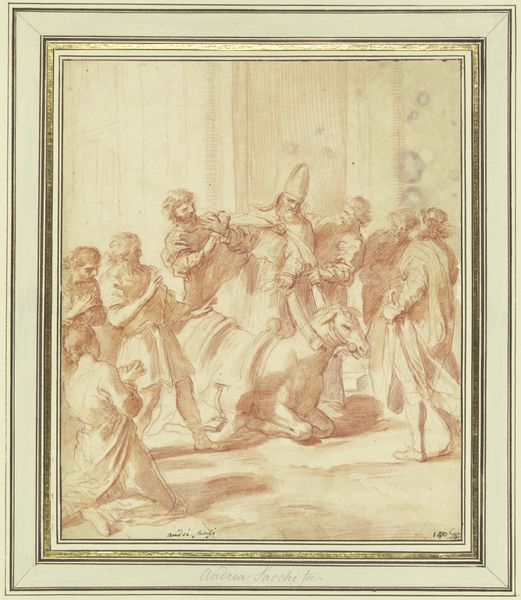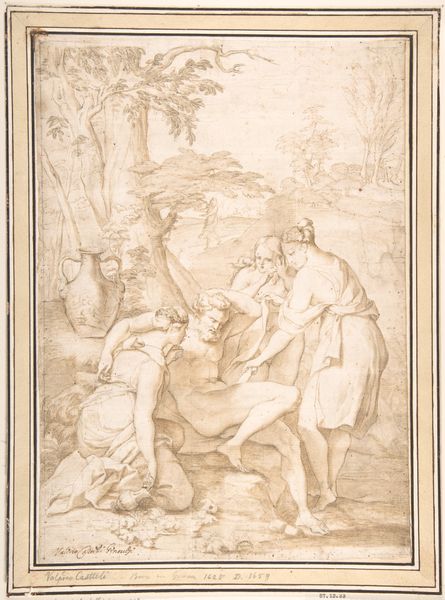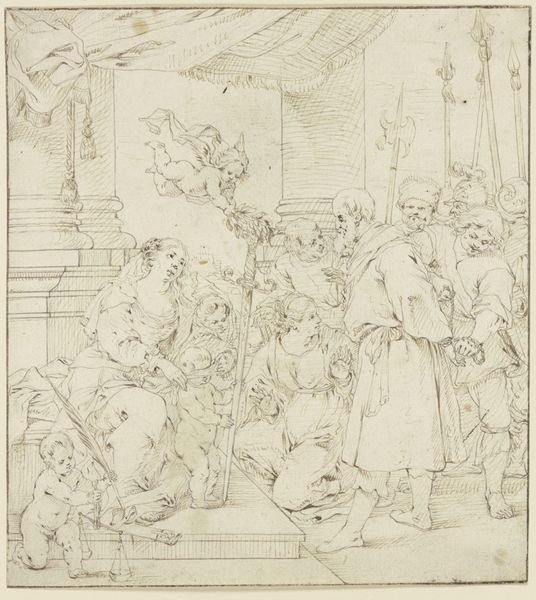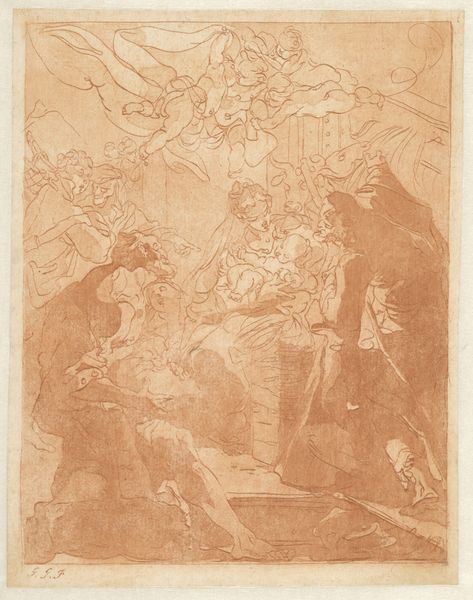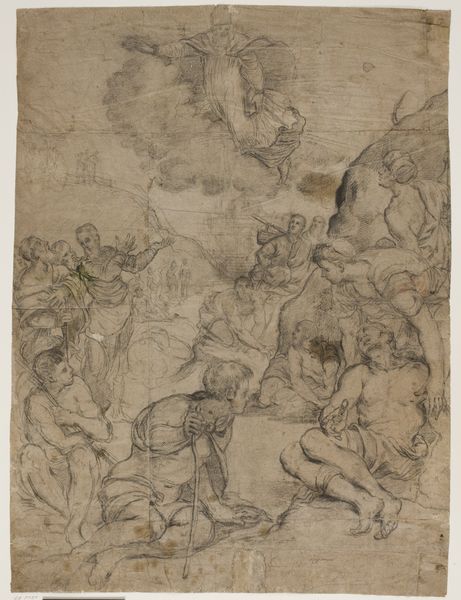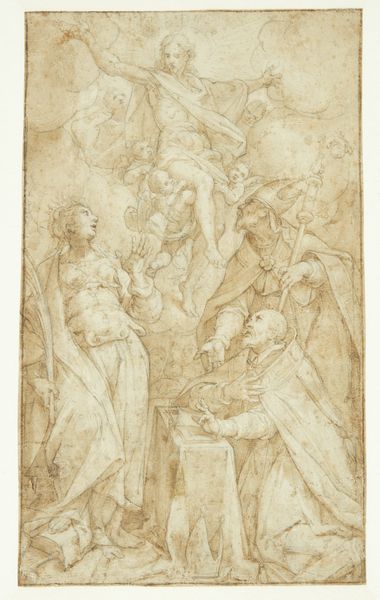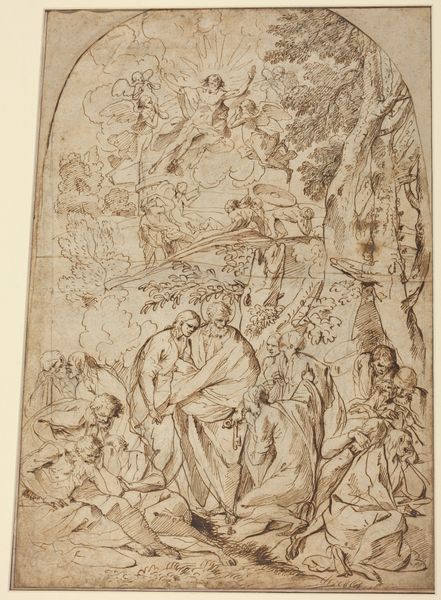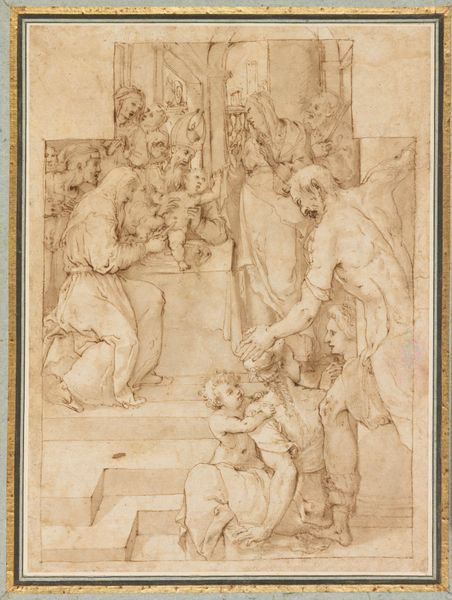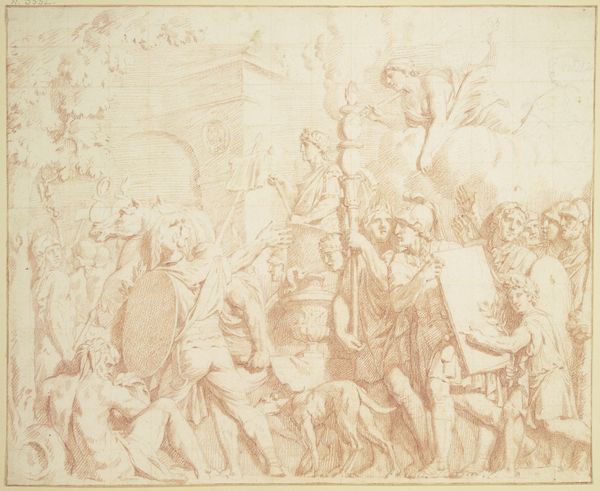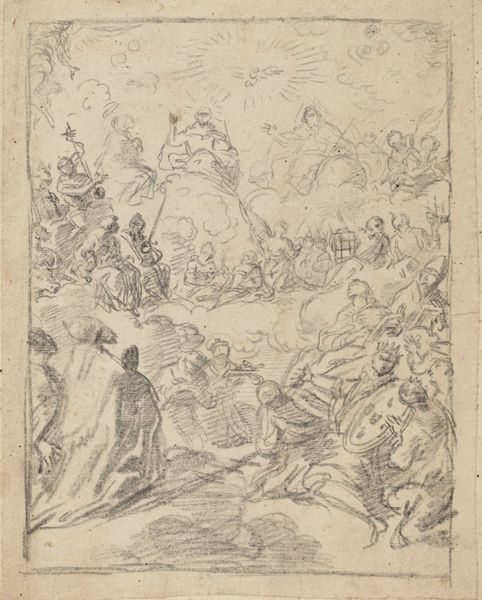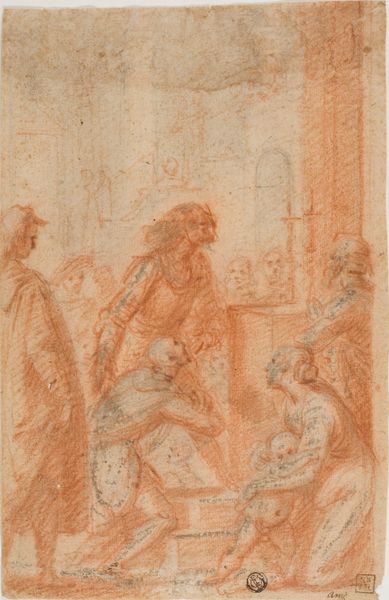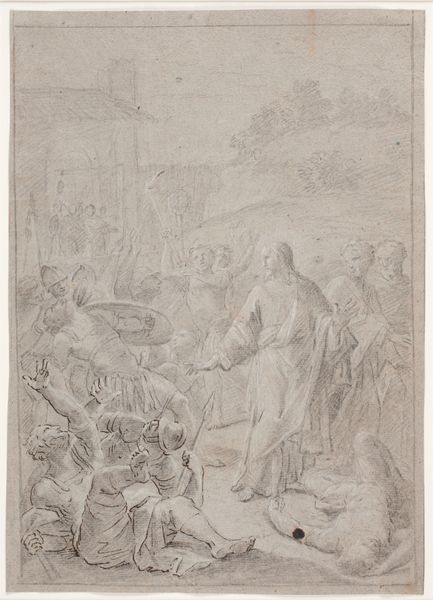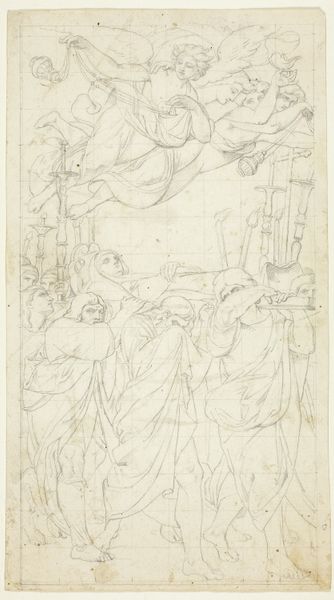
Michelangelo Presenting the Moses of the Tomb of Pope Julius II to Pope Paul III 17th-18th century
0:00
0:00
drawing, ink, pen
#
drawing
#
charcoal drawing
#
figuration
#
ink
#
pen
#
history-painting
#
academic-art
#
italian-renaissance
#
italy
Dimensions: 11 3/4 x 7 7/8 in. (29.85 x 20 cm) (sheet)11 7/16 x 8 5/8 in. (29.05 x 21.91 cm) (mount)23 5/8 x 19 3/4 in. (60.01 x 50.17 cm) (outer frame)
Copyright: Public Domain
Curator: This drawing, rendered in pen, ink, and charcoal, is titled "Michelangelo Presenting the Moses of the Tomb of Pope Julius II to Pope Paul III," dating from the 17th-18th century and attributed to Pietro Antonio de' Pietri. Editor: The sepia tones lend it an air of profound solemnity, wouldn't you agree? The artist masterfully uses the medium to draw our eyes to the dynamic poses and flowing robes, creating a balanced but obviously asymmetrical composition. Curator: Yes, the symbolism is powerful. The figure of Moses with his sculpted musculature obviously represents creative authority, particularly important to Paul III, who saw the papacy itself under scrutiny. Editor: Notice how de' Pietri has carefully constructed space within the composition; a shallow depth of field reinforces the primacy of the presentation but includes a large number of witness figures and places emphasis on reactions within the group. Curator: And of course, Moses holding the tablets serves as an overt reference to law and divine power—echoing not just artistic genius but papal power as well. The imagery seeks to legitimise Paul III’s reign. Editor: From a formalist view, look at how the linear work generates tone by the varying density of marks on the paper. The artist gives shape and drama through a complex interplay of lines, clearly interested in the aesthetic value of line itself. Curator: True, and those lines are not just marks, they’re symbolic gestures representing power dynamics, deference, and artistic lineage. Moses becomes more than a biblical figure. Editor: Well, observing its pure aesthetics reveals that this is more than merely an illustration of some story, it is a constructed reality with symbolic codes; it achieves a complexity beyond its representational elements. Curator: It’s fascinating how de' Pietri, through this drawing, weaves together the themes of art, religion, and politics. Editor: Agreed. It demonstrates the powerful, interwoven elements that elevate this Italian work beyond mere depiction.
Comments
No comments
Be the first to comment and join the conversation on the ultimate creative platform.
